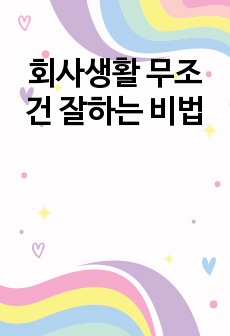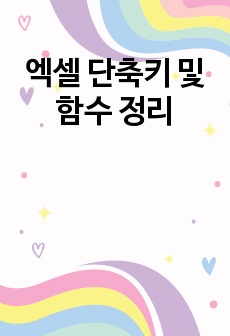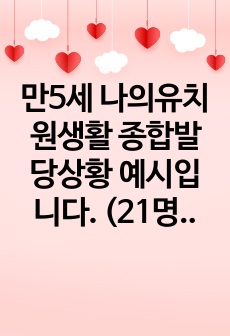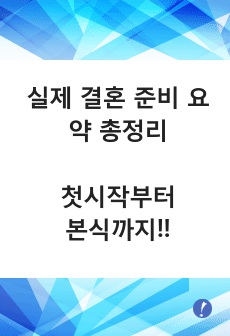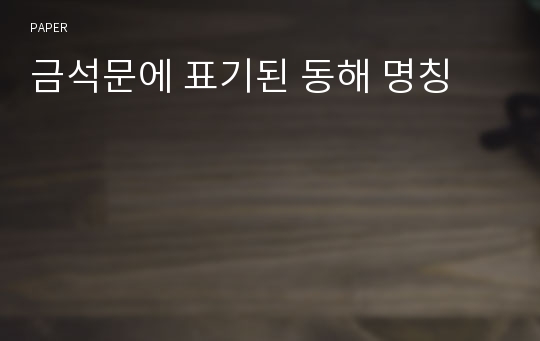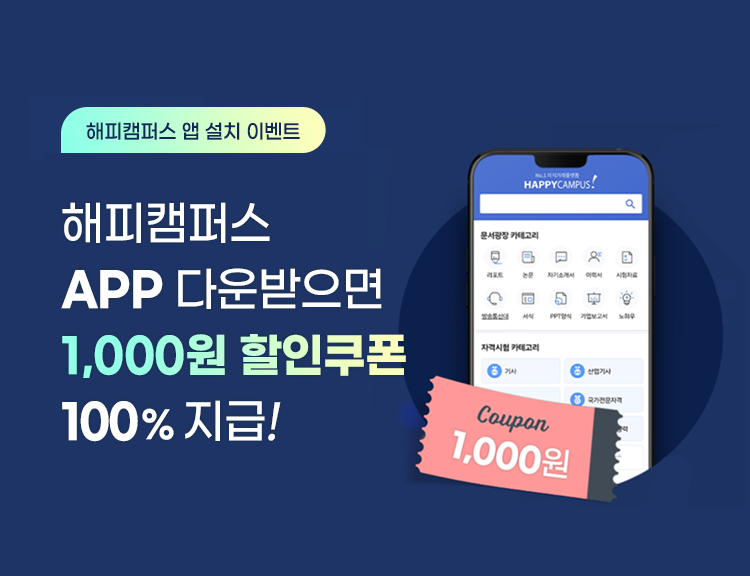* 본 문서는 배포용으로 복사 및 편집이 불가합니다.
서지정보
ㆍ발행기관 : 한국이사부학회
ㆍ수록지정보 : 이사부와 동해 / 5권
ㆍ저자명 : 이상태
ㆍ저자명 : 이상태
목차
[국문초록]Ⅰ. 서언
Ⅱ. 동해 명칭이 표기된 금석문
Ⅲ. 금석문의 사례별 검토
Ⅳ. 동해 관련 금석문
Ⅴ. 맺음말
[ABSTRACT]
한국어 초록
우리나라에서 동해(東海)라는 명칭을 처음 사용한 것은 상당히 오래 전인 고구려 동명왕 건국기사에서 비롯된다. 이때가 B.C. 59년으로 동해라는 명칭은 삼국이 건국되기 이전인 B.C. 59년부터 사용하기 시작하여 지금까지 우리 민족이 2,000 여 년간 사용해 온 매우 오래된 바다 명칭이다. 동해를 우리 민족이 얼마나 오래 전부터 사용해왔는가를 말해주는 다른 사례를 찾아보면 고구려의 장수왕이 부왕의 업적을 기리기 위하여 5세기에 세운 광개토 대왕비를 들 수 있다. 이 비문 중 제3면에 능을 지키기 위하여 동해 해변가에 사는 주민 3명을 차출한다고 적혀 있다. 이와 같이 오랜 역사를 가진 동해 바다 명칭은 현존하는 금석문에도 많이 등장하는데 언제, 어떻게, 어떤 금석문에 표기되었는지를 살펴보면 다음과 같다. 한국에는 현존하는 금석문은 수천 종인데, 그 중에 동해 명칭이 표기된 금석문은 122종이다. 이 중에도 공개를 꺼리는 금석문이 있으므로 공개 열람이 가능한 비문은 43종이다. 시대별로 살펴 본 동해 명칭 금석문 5세기에 제작된 광개토대 왕릉비가 있다. 8세기에는 4종의 금석문에서 동해 바다 명칭을 찾을 수 있고, 9세기에도 3종, 10세기에는 6종의 금석문에서 동해 명칭을 볼 수 있다. 14세기에는 6종의 금석문이, 16세기에는 2종의 금석문이, 17세기에는 6종의 금석문이 18세기에는 7종의 금석문이 19세기에도 7종의 금석문이 20세기에도 1종의 금석문에서 동해 바다 명칭을 찾을 수 있다. 43종의 금석문을 형태별로 분류하면 사람들의 공덕을 찬양하는 왕릉비가 3종, 왕자비가 1종, 장군비가 2종, 문신비가 11종, 승려비가 8종 등으로 도합 25종인데 금석문의 반을 차지한다. 불교에 관한 금석문 중에는 범종기가 1종인데 성덕대왕신종기 기문이 있으며, 불상을 만들면서 적은 금석문인 감산사 석조 미륵보살입상 기문과 감산사 석조 아미타불입상 기문이 있다. 사원 건축 내력을 적은 백련사 석비, 광법사 사적비, 신흥사 사적비, 숭복사비 등이 있다. 금석문 중에는 성을 건축하고 그 내력을 적은 금석문도 있는데 영변 철옹성의 축성비에서 동해 명칭을 찾을 수 있다. 이외에도 전쟁에서 승전한 사실을 적고 있는 비문도 있는데 임진왜란 때의 승전을 기록한 조조암실기와 삼충사묘정비가 있다. 동해 바다는 우리민족의 숭배 대상으로 고려 시대부터 동해신을 모신 사당을 짓고 국가에서 제사 지냈다. 양양에는 지금도 동해 신을 모신 사당이 있는데 그 곳에 동해 용왕을 모신 동해 용왕 묘비가 있고, 삼척에는 동해 바다를 찬양하는 동해비가 현존한다. 동해는 우리민족과 매우 밀접하고 깊은 관련을 맺고 있는 바다였으므로 많은 금석문에서 동해 바다 명칭을 찾을 수 있다.영어 초록
The name of the East Sea was first appeared in Korea a long time ago in the historical document on the founding story of King Dongmyeong in Koguryeo in 59 B.C. The name of the East Sea started to be used long before 59 B.C. before the three countries of Koguryeo, Paekjae and Shilla were established and has been used for over 2,000 years by Koreans. Another evidence to show how long Koreans have used the name of the East Sea is in the tombstone of the Great King Gwanggyeto built in the 5th century by his son, King Jangsu of Koguryeo to celebrate his father s achievements. In the third side of the tombstone, it writes that 3 residents living in the coast of the East Sea were recruited to guard the tomb. The East Sea as the name of the sea with such a long history appears in many stone epigraphs that remain until the present time and the details on when, how and which epigraphs are as follows. There are thousands of historical epigraphs on the stone in Korea and 122 stone epigraphs include the name of the East Sea. Among these, excluding the stone epigraphs that are not open to the public, 43 epigraphs are available to the public. Historically, there is the tomb stone of the Great King Gwanggyeto in the 5th century. The name of the East Sea was found in 4 epigraphs of the 8th century, 3 epigraphs of the 9th century and 6 epigraphs of the 10th century. The East Sea appeared in 6 epigraphs of the 14th century, 2 epigraphs of the 16th century, 6 epigraphs of the 17th century, 7 epigraphs of the 18th century, 7 epigraphs of the 19th century and 1 epigraph of the 20th century. When categorizing 43 epigraphs into types, there are 3 tombstones that glorify good deeds of kings, 1 for a wife of a prince, 2 for generals, 11 for civil officials and 8 for Buddhist monks and the total is 25 epigraphs, which are the half of the available epigraphs. The Buddhist epigraphs include one epigraph on the Buddhist bell for Great King Sungduk, and the epigraphs written during the making of Buddhist statues, which were the stone standing Mireuk Bosal in Gamsan Temple and the stone standing Amitabul in Gamsan Temple. There are stone epigraphs on the building history of temples for Baeryeon Temple, Gwangbup Temple, Shinheung Temple, Sungbuk Temple, etc. Some epigraphs are about building a castle and the celebrating stone for building Cheolong Castle in Yeongbeon includes the name of the East Sea. In addition, there are epigraphs to celebrate the victory of wars such as celebrating stones of Jojoamsil and Myojeong in Samchung Temple that recorded the victory of the war against Japanese in the year Imjin. The East Sea has been worshiped by Koreans and from Koryeo Dynasty, temples worshiping the god of the East Sea were built and the national ceremonies were held. In Yangyang, there is still a temple to worship the god of the East Sea which has the tombstone for the dragon king of the East Sea and in Samcheok, there is a stone for the East Sea to glorify the East Sea. Since the East Sea has been deeply related to our people, the name has appeared in many epigraphs.참고 자료
없음태그
"이사부와 동해"의 다른 논문
 17세기 후반 안용복의 피랍·도일사건과 의미36페이지
17세기 후반 안용복의 피랍·도일사건과 의미36페이지 월송포 진성 발굴 의의와 울릉도 수토 출발지 변천사39페이지
월송포 진성 발굴 의의와 울릉도 수토 출발지 변천사39페이지 울릉도 부속 섬으로서 독도의 법적 지위29페이지
울릉도 부속 섬으로서 독도의 법적 지위29페이지 울릉도 수토와 삼척영장 장한상26페이지
울릉도 수토와 삼척영장 장한상26페이지 異斯夫의 新羅領土擴張과 于山國35페이지
異斯夫의 新羅領土擴張과 于山國35페이지











